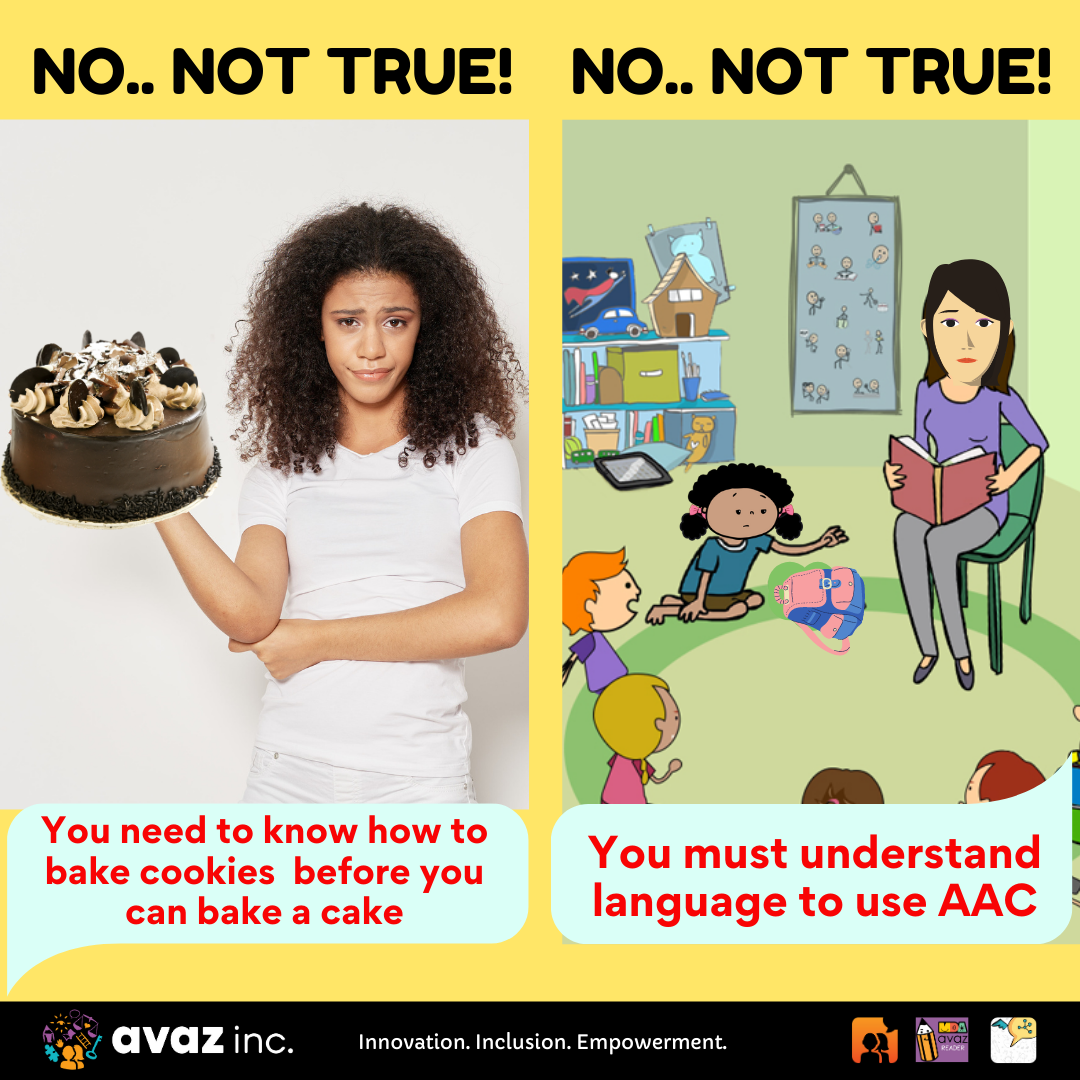Why should a minimally verbal individual use AAC when they have speech?
Individuals with developmental disabilities such as autism and similar conditions experience a range of difficulties with respect to speech, language and communication. Some are non verbal and the benefits of AAC in enabling their communication is more obvious. Individuals who have limited speech, on the other hand, may be expected to use their speech for all their communication needs. Research shows that multimodal communication and use of AAC can benefit minimally verbal individuals by making communication effortless and more effective. Read on to learn how AAC can support minimally verbal speakers!


Who is a Minimally Verbal Speaker?
The minimally verbal speaker is one who has a very small repertoire of spoken words that are used communicatively (Kasari et al., 2013).They use spoken language in limited settings and purposes. Usually the words speaker has learned the words they use as scripted texts.
Difficulties in Accessing Speech
Minimally verbal speakers can have intermittent, unreliable or insufficient speech.
Intermittent Speech
A person is said to have intermittent speech when they can speak at times and not at others.T he difficulty in speaking could be due to stress, illness, or sensory overload. It can also be due to meltdowns and co-occurring medical conditions like epilepsy and migraines.
Unreliable Speech
A person with unreliable speech may not be able to say what they intend to in a situation. They might find it easier to use a scripted text instead.
For instance, they may use a scripted response of “I am fine” when someone asks “how are you?“, even if they are sick and waiting for the doctor.
This mismatch between what they want to convey vs actually speak out, is the common cause of communication breakdown.
Insufficient Speech
A person has insufficient speech when their speech agrees with the intended meaning but does not fully meet their communication needs. Difficulty using speech may be present when they want to socialise, talk about their feelings or past experiences. On the other hand they may find it easier to talk about facts!
In all of the above cases, a person may be considered as having functional speech. The ability to say a few words and short phrases is considered as functional speech. But, one cannot meet one’s communication needs with only those words. The person definitely needs AAC in this scenario.
However we commonly find that these individuals may not have easy access to AAC. Let’s see why.
Barriers to AAC
- Knowledge barrier – Parents may be unaware of the AAC technologies currently available.
- Cost – With their ability to speak they may not be considered for grants and insurance where applicable. They may have to spend money from their pocket for the AAC.
- Attitudinal barriers & AAC myths like –
- AAC is only for those who can’t speak.
- AAC is the last resort.
- Use of AAC will impede speech development.
- Insufficient speech being attributed to stress and parents believing that relaxation will enable their child to communicate verbally without any help.
Please be Mindful of their Struggles


Because of focus on existing speech, parents and professionals fail to recognise –
- Communication breakdowns and how AAC supports can address these breakdowns.
- Broader communication needs – because communication is beyond just requesting.
- That communication and not oral speech, should be the priority. For a minimally verbal child, speech is simply less effective or more effortful than alternatives.
People with typical speech are frequently able to choose communication methods by personal preference, such as preferring texting to calling. Others may type out statements before reading them aloud especially during presentations.
Similarly, we should give AAC systems to minimally verbal individuals as one of their means of communication.
A rapid typist may prefer a text-based system. Someone with difficulty in reading or writing, or who is a visual thinker, may prefer a system with more picture symbols.
We should normalize AAC and encourage it in any and all contexts where they support communication. Remember the Augmentative part of AAC.
What does research say?
In an effective naturalistic behavioural intervention, researchers found that when therapists modelled language with an Speech Generating Device- SGD (with no expectation from the child to use it expressively), it facilitated longer and more frequent reciprocal communication interactions between therapists and minimally verbal clients (Kasari et al, 2014 and Almirall et al, 2016). In this study, therapists used SGD for modelling language with increasingly different communicative functions. The gains in verbal communication were seen to increase among children.
This study highlights the power of modelling and also answers many questions about AAC in the minimally verbal, namely –
1.When can we introduce AAC to these children?
As soon as possible.
2. Will using AAC delay the development of speech in children with CCN (Complex Communication Needs) or Autism?
Definitely not. The reverse is true.
This is an important finding to share with professionals who may be reluctant to bring SGDs into their interventions.This understanding is also important for parents of children with ASD who may worry about the use of SGDs as they want their child to talk.
How to use AAC with the minimally verbal?
You can use AAC the same way it is used with any other child. By –
1. Presuming competence
2. Modelling without expectation.
You can also use different strategies like self talk, parallel talk, extension, expansion wherever applicable. Immerse the child in language both auditory and visually. Accept all forms of communication. Remember to pause and provide adequate wait time for them to process the information and respond.
Not having the pressure of speaking at all times, and having the visual representation of language available to them through AAC will definitely make them better communicators.
With limited use of generative speech, many minimally verbal children rely on unconventional behaviors to communicate (Iacono & Caithness, 2009). Without access to conventional communication an individual with autism is unable to demonstrate their agency. The ability to communicate one’s needs,desires and actions is central to agency. AAC helps them achieve that.
References:
https://praacticalaac.org/praactical/praactical-research-aac-intervention-for-children-with-asd/
http://kidtalk.vkcsites.org/wp-content/uploads/2014/11/Adaptive-Interventions_Marcus.pdf



